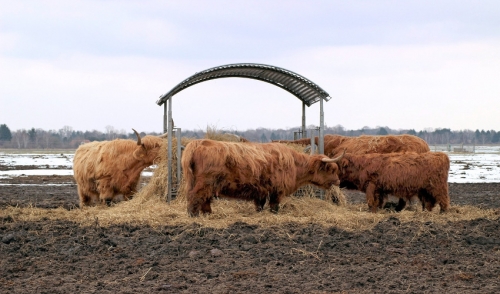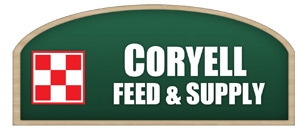{article.name}
10 Step Winter Cattle Feeding Program

- Share this:
- Share on Facebook
- Pin on Pinterest
- Tweet on Twitter
Now is the time to plan your beef herd winter feeding program. Fine-tuning winter feeding management helps optimize performance, but it is also essential for good animal husbandry, according to livestock nutrition and animal health experts with North Carolina State University (NCSU).
10-Point Plan
Matt Poore, PhD, professor and ruminant nutrition specialist with NCSU College of Agriculture and Life Sciences, suggests utilizing this 10-Point Winter Feeding Plan to help assure you have adequate, high quality feed supplies for winter.
- Analyze hay for feeding value and develop a supplementation program to meet energy, protein and mineral requirements. Based on the feed analysis, rations can be balanced taking into account life cycle phases, season of the year, weight of the cow, and additional needs of older cows or growing heifers.
- Keep hay or adequate pasture available for cows at all times. Adequate hay or pasture should be available daily, especially during colder months. Feeding enough hay for 3 days just before a predicted storm can prevent the stress of trying to get to cows when roads may be impassable.
- Body condition scores (BCS) of cows should be recorded every two months during winter and more often during extremely cold or damp conditions. Aim to have most cows in the range of BCS 5 to 7. To improve body condition, consider management techniques that improve feed efficiency, such as early weaning of calves, shelter from wind and rain and prevention of muddy conditions.
- Ensure there is enough feed on hand for the winter season to feed all cattle. Plan for reasonable contingencies to prevent feed shortages. Once hay inventory and quality is known, extra hay can be purchased if needed and you can plan for an appropriate protein and energy supplement. Remember hay is always less expensive and generally higher in quality if purchased in the fall.
- Separate heifers, thin cows and older cows from the main herd for feeding purposes and separate lactating cows from dry cows. Thin, old, or small cows and heifers compete poorly for feed when kept with younger and more aggressive cows.
- Re-group the cattle during the winter as needed so thin cows can be fed separately. Groups based on age, pregnancy status, and body condition scores need to be re-evaluated as winter progresses. Re-grouping will help keep cows in adequate body condition.
- Cull chronically thin cattle, old cows, and cattle with dental or health problems. Income from cull cows can be significant on cow/calf enterprises, accounting for 15 to 20 percent of gross income. Appropriate preemptive culling may also prevent suffering in aged or debilitated cows.
- Adjust rations as calving season approaches to provide more energy and protein. As cows enter late stages of pregnancy and begin to calve, dietary adjustments must be made to keep up with changing nutritional requirements.
- Provide minerals at all times based on requirements for your area. Minerals are a key component of a cattle nutrition program. Forages may provide the energy and protein that a cow needs, but they are almost always deficient in one or more minerals.
- Provide adequate shelter from wet or cold weather. Purina has designed supplemental feed products to help you economically manage your beef cattle winter nutrition needs in all life stages. Wind and Rain® minerals, for example, have been specifically designed to meet mineral deficiencies based on forage quality and cattle nutritional requirements throughout the year. These minerals provide wind and water resistance and enhance consistent consumption.
Contact your Purina dealer today for more information on these and other beef cattle nutrition programs that can help you fine-tune winter feeding management to your specific situation.
Special Offers
We are constantly adding new specials to our site. Be sure to check back often!


Comments